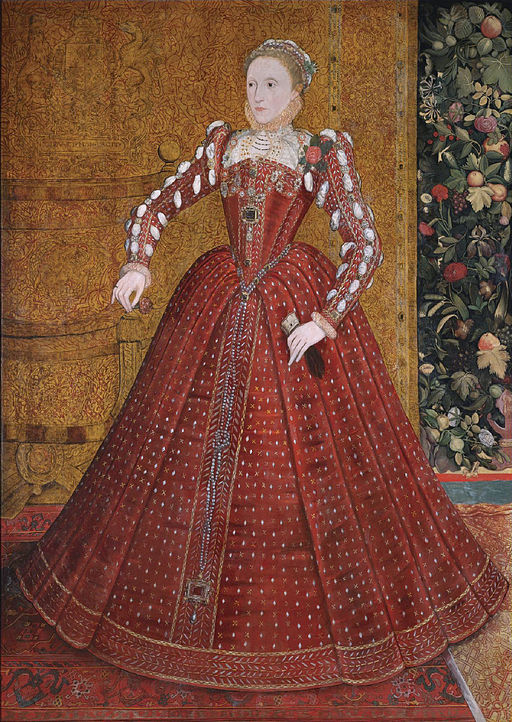Paul Revere would not have warned the colonists by yelling “The British Are Coming!” That would make no sense, as the colonists considered themselves British, too. He probably shouted “The Regulars Are Out!”
A River Runs Through It
 You’ve probably heard of Henry Hudson (1565-1611). He was an English explorer who navigated the area around what is present day New York City, and then sailed northward, searching for an arctic passage to Asia. He tried this four times. What emerges from the various biographical accounts I’ve read about the man is that he was an excellent navigator, a headstrong adventurer, and a big fat jerk. And what you may not know about him is that he was murdered.
You’ve probably heard of Henry Hudson (1565-1611). He was an English explorer who navigated the area around what is present day New York City, and then sailed northward, searching for an arctic passage to Asia. He tried this four times. What emerges from the various biographical accounts I’ve read about the man is that he was an excellent navigator, a headstrong adventurer, and a big fat jerk. And what you may not know about him is that he was murdered.
He never found the passage, but he did come upon a magnificent river that had been discovered in 1524 by Florentine navigator Giovanni da Verrazano. But somehow the river became known from then on as the Hudson.
On his fourth attempt to find the Pacific, Hudson entered a large bay, which is now called—wait for it—Hudson Bay. But still no Pacific Ocean.
He cruised around the bay for a little too long, and then winter set in. The ship became frozen in the ice. Spending the winter in the freezing Arctic with limited food and angry Indians made the crew yearn for the open sea and a return to England. And remember—in the Arctic in winter, the sun dips below the horizon and stays there. For months. They would have been shrouded in darkness and gloom. Trapped in ice, slowly starving to death, and enveloped in darkness is not a good combination.
But Henry wanted to continue the voyage. He was not much of a people person.
Eventually the crew mutinied. They put Henry, his son, and eight other loyal crewmembers in a small boat and set them adrift in the Hudson Bay. They were never seen again.
That’s Where They Drew the Line
The Mason-Dixon line was created by scientists Charles Mason and Jeremiah Dixon, who were surveying the wilderness between Pennsylvania and Maryland to settle a boundary dispute. Later it became the boundary between slave and free states.
————-
Bill Bryson, A Short History of Nearly Everything
I Cannot Tell a Lie
George Washington probably never cut down a cherry tree. That story seems to have been made up by a biographer who wrote about Washington in the mid-1800s.
What a Brick
If you dug a hole to the center of the Earth and then dropped a brick down it, it would take 45 minutes for the brick to hit the bottom.
______
Bill Bryson, A Really Short History of Nearly Everything
Make-up Game

On Monday’s blog, I talked about how Elizabethans smeared lead-based makeup on their faces. If you think that’s skeevy, how about bird poop?
Prior to the mid-19th century, Japanese geisha achieved a porcelain-white skin with the time-honored combination of lead and zinc-based makeup.
Anyone’s teeth would look yellow in contrast. So geishas often painted their teeth black. Black teeth contrasted nicely with the snow-white pallor of the face.
To achieve a lustrous complexion, many geishas smeared their faces with–yes–bird droppings. Today many fashionable spas have begun offering bird-dropping facials. I am not making this up. If you don’t believe me, Google it.
I Came, I Saw, I Withdrew Cash
At the Vatican ATM in Rome, users can perform their transactions in Latin.
__________
source: Mental Floss
Hers and Hers
Virtually every bee and ant that you see is a female.
White Wash
By the time Elizabeth I was on the throne (in 1559), the ideal of female beauty was a snow-white face, with daubs of red on each cheek. To achieve the deathly pallor, women relied on ceruse, which is white lead. They slathered the stuff from hairline to bosom. Freckles and pockmarks from smallpox could be hidden by using a mixture containing powdered mercury. The whole surface was then spackled with egg white, which, when dried, gave the face a stiff and other-worldly sheen.
Unfortunately ceruse and mercury are highly toxic. The ceruse was made by steeping bars of lead in vinegar and urine and then scraping off the white powder that formed. Ceruse could lead to baldness, mental problems, and open sores. Mercury caused blackened teeth, an unsteady walk, and all too often, an early death.
After Elizabeth suffered a bout of smallpox, she began coating her face thickly with the lead paste—reputedly as much as half an inch thick in places—to smooth her pocked skin.
Lest you think these crazy cosmetics are a thing of the past, think again. According to this investigation conducted by the Chicago Tribune in 2010, testers found that several skin-lightening creams on the market contained toxic doses of mercury. There’s a booming market today for such creams; in some cultures, lighter skin is seen as a sign of higher status, while many Caucasians use the lighteners to erase blemishes and smooth out skin tone.
Stay tuned–Wednesday’s blog will be more fun-time lead-based cosmetics horror stories!
Dead Heads
The Shuar tribe, who live between Ecuador and Peru, practiced ritual head shrinking as recently as the 1950s.

